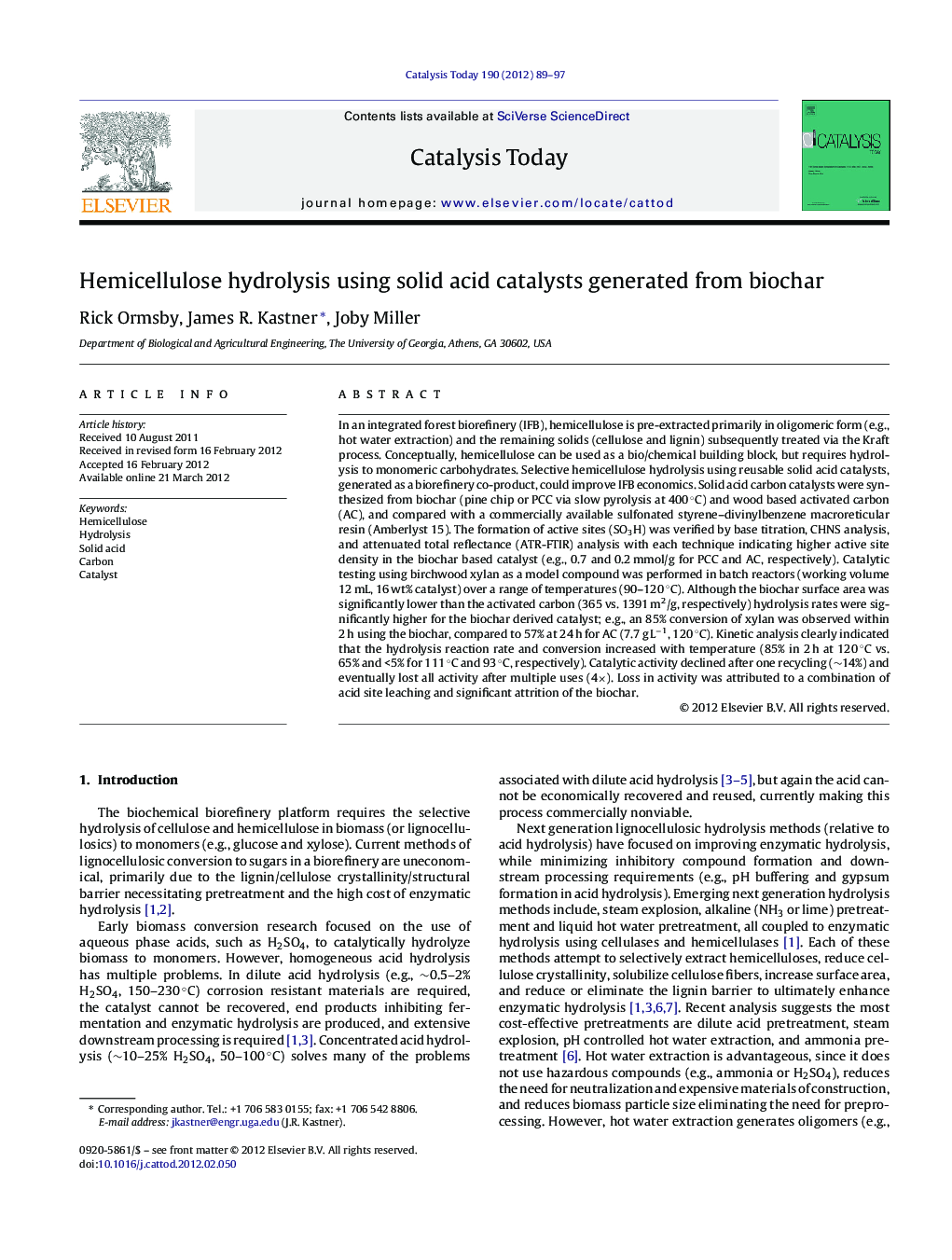| Article ID | Journal | Published Year | Pages | File Type |
|---|---|---|---|---|
| 55238 | Catalysis Today | 2012 | 9 Pages |
In an integrated forest biorefinery (IFB), hemicellulose is pre-extracted primarily in oligomeric form (e.g., hot water extraction) and the remaining solids (cellulose and lignin) subsequently treated via the Kraft process. Conceptually, hemicellulose can be used as a bio/chemical building block, but requires hydrolysis to monomeric carbohydrates. Selective hemicellulose hydrolysis using reusable solid acid catalysts, generated as a biorefinery co-product, could improve IFB economics. Solid acid carbon catalysts were synthesized from biochar (pine chip or PCC via slow pyrolysis at 400 °C) and wood based activated carbon (AC), and compared with a commercially available sulfonated styrene–divinylbenzene macroreticular resin (Amberlyst 15). The formation of active sites (SO3H) was verified by base titration, CHNS analysis, and attenuated total reflectance (ATR-FTIR) analysis with each technique indicating higher active site density in the biochar based catalyst (e.g., 0.7 and 0.2 mmol/g for PCC and AC, respectively). Catalytic testing using birchwood xylan as a model compound was performed in batch reactors (working volume 12 mL, 16 wt% catalyst) over a range of temperatures (90–120 °C). Although the biochar surface area was significantly lower than the activated carbon (365 vs. 1391 m2/g, respectively) hydrolysis rates were significantly higher for the biochar derived catalyst; e.g., an 85% conversion of xylan was observed within 2 h using the biochar, compared to 57% at 24 h for AC (7.7 g L−1, 120 °C). Kinetic analysis clearly indicated that the hydrolysis reaction rate and conversion increased with temperature (85% in 2 h at 120 °C vs. 65% and <5% for 111 °C and 93 °C, respectively). Catalytic activity declined after one recycling (∼14%) and eventually lost all activity after multiple uses (4×). Loss in activity was attributed to a combination of acid site leaching and significant attrition of the biochar.
Graphical abstractFigure optionsDownload full-size imageDownload high-quality image (133 K)Download as PowerPoint slideHighlightsCarbon catalysts generated from slow pyrolysis biochar hydrolyzed hemicellulose to xylose. ► Xylose selectivity was 85 to 90% with limited formation of furfural. ► Activated carbon catalysts had significantly lower activity compared to the biochar based catalysts. ► The hydrolysis reaction rate and conversion increased with temperature (85% in 2 h at 120 °C vs. <5% for 93 °C). ► Catalytic activity declined after one recycling (∼14%) and eventually lost all activity after multiple uses (4×), due to acid site leaching and attrition.
